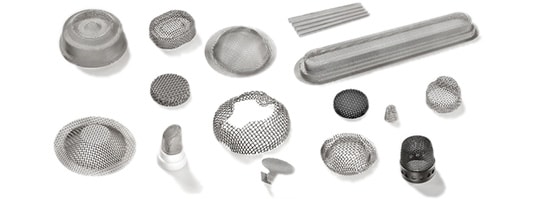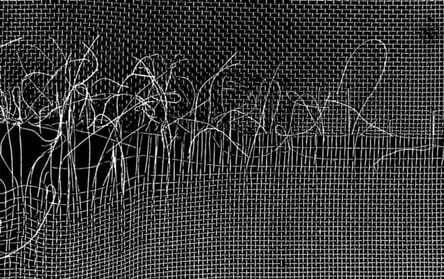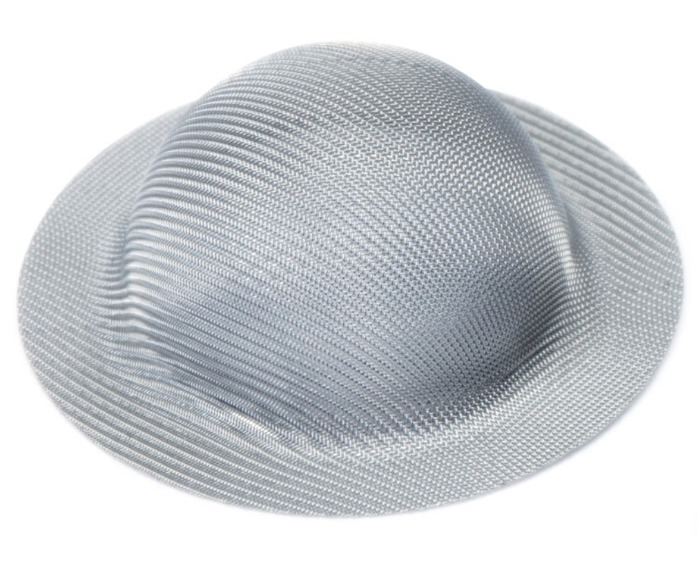Deep Drawing Wire Mesh for Molded Pulp Products
There are many things that go into fabricating the molds that produce best-in-class molded pulp products. From the alloy you use to fabricate your screens to the screening media itself, engineers and system operators must find the perfect blend of specifications to develop a sustainable process.
It can be easy to generate a set of specifications based solely on your pulp slurry and nothing else. But it's also important to remain cautious of the deep drawing process needed to form the screen, as this will ultimately control the effectiveness and aesthetic of the finished molded pulp product.
So, what does deep drawing wire mesh mean, and what aspects of the process do you need to be mindful of?
W.S. Tyler has helped customers form and integrate wire mesh solutions for over 150 years and is here to share this experience to help you learn, grow, and make the world a safer place.
This is why we wrote the following article highlighting everything you need to know about deep drawing wire mesh. It will cover:
- The definition of deep drawing
- What the deep drawing process consists of
- The issues associated with deep drawing wire mesh molds
- The factors that can limit your ability to deep draw your wire mesh molds
What Is Deep Drawing?

Deep drawing is the value-added process in which a flat, two-dimensional piece of mesh is formed into a three-dimensional profile. This process is particularly popular when producing molded pulp packaging, such as take-out containers.
Not only does this maximize the screening surface area and allow the mesh to fit snuggly into your equipment, but it also ensures the mesh promotes an even distribution of heat and pressure throughout the mold.
As stainless steel, copper, aluminum, and brass can all be used to weave wire mesh for molded pulp applications, it is important to know that these alloys can, in fact, all be deep drawn. That said, parameters surrounding the deep drawing process, such as the amount of pressure applied, must be fine-tuned based on the size of the mesh piece, the alloy of the mesh, and the depth of the draw.
What Does the Deep Drawing Process Look Like?
When deep drawing wire mesh, the mesh must first be cut to a manageable size and shape, then pre-formed to the mold profile. It is critical to be mindful of this step, as this is one of the leading causes of misformed mesh.
That will be discussed shortly.
At this point, the mesh is loaded into a press machine equipped with a die that is furnished with a cavity representing the final mold profile. The press then drives the mesh into the cavity, causing it to accurately take the form of the die.
After being pressed, the drawn wire mesh mold is then trimmed, removing excess material. The final step of the process is to add any sort of finishing coatings that your partial process calls for.
What Issues Can Occur When Deep Drawing Wire Mesh?
Despite the durability wire mesh presents to the molded pulp industry, deep drawing can prove to be a delicate process. Having said that, cracked mesh, winkled mesh, deformation, and spring back are all issues that can occur when the process is not executed with care.

Cracked Wire Mesh
Cracked wire mesh refers to the occurrence in which the individual wires of the mesh begin to break in a focused area of the mold. It is a direct reaction to the mesh being drawn beyond its limits and often occurs when the process is too aggressive or if the mesh itself is of low quality.
Wrinkled Wire Mesh
Wrinkled wire mesh is used to describe the occurrence in which your wire mesh develops waves or folds while being deep drawn. Failing to properly lubricate the dies of the press, applying too much pressure to the mesh, or failing to properly cut the mesh to a manageable size can all lead to wrinkled mesh.
Deformation
Deformation is a term used to describe the occurrence in which your wire mesh molds are not properly formed. This is often a result of the wire mesh not having adequate support when drawn.
Spring Back
Spring back describes the occurrence in which your wire mesh struggles to hold its form, causing it to"spring back" to its original flat orientation. In almost all cases, spring back is directly tied to your wire mesh failing to undergo an accurate and thorough annealing process.
What Limits My Ability to Deep Draw Wire Mesh?
While deep drawing may seem like a process that can be applied to any wire mesh specification, there are a handful of factors that can limit your ability to form molded pulp mesh molds. First and foremost is the alloy and quality of your mesh.
As stated above, there are several alloys that can be used to weave wire mesh for molded pulp applications. That said, these alloys have their own set of quality grades and characteristics that can affect how efficient your deep drawing process is.
If your alloy or mesh quality doesn't match your deep drawing process, odds are you will frequently encounter cracked mesh.
To get a better idea of which alloy is best for your molded pulp process, read the article below:
Another factor to be mindful of is the thickness of the wires in your mesh. Naturally, as the wires used to weave your mesh get thicker, your drawing press will have a harder time forming your mesh.
When a wire diameter that is too thick is used, you increase the risk of encountering deformed mesh molds.
As experimenting with wire mesh weave patterns can benefit the overall capacity and effectiveness of your molds, it is essential to know that certain weave types don't draw well. This is because specific weave patterns, such as those seen throughout our MINIMESH® product line, feature complex patterns that become compromised.
This, in turn, impacts the geometrics of the pore openings, rendering the mesh ineffective.
Looking at the equipment you use, the accuracy and quality of your dies and other tooling can be detrimental to your deep drawing process. For example, if you are using stainless steel dies but are forming aluminum wire mesh, galvanic corrosion can occur and cause inconsistencies in your molded pulp products.
To that end, tooling that is not designed in accordance with your wire mesh needs increases the chance of encountering faults in your mesh.
Deep Drawn Wire Mesh Is Only as Good as the Annealing Process That Is Used
Deep drawing is applied to wire mesh to give it a three-dimensional profile. This profile facilitates the manufacturing of reliable molded pulp products, evenly disputing heat and pressure throughout the process.
One of the most common and bothersome issues you will encounter when integrating wire mesh is your mesh molds not holding their form. Fortunately, the remedy is simple: understanding and applying a reliable annealing process.
Having developed a handful of performance-enhancing value-added processes over the past 150 years, W.S. Tyler will work with you until you are comfortable and confident in your wire mesh mold's ability to form sustainable molded pulp products.
Read the article below to gain a better understanding of the annealing process and how it benefits the characteristics of wire mesh when applied as a molded pulp solution:
About Ronnie Brown
Ronnie is the Content Writer for W.S. Tyler and has four years of experience as a professional writer. He strives to expand his knowledge on all things particle analysis and woven wire mesh to leverage his exceptional writing and graphic design skills, creating a one-of-a-kind experience for customers.




